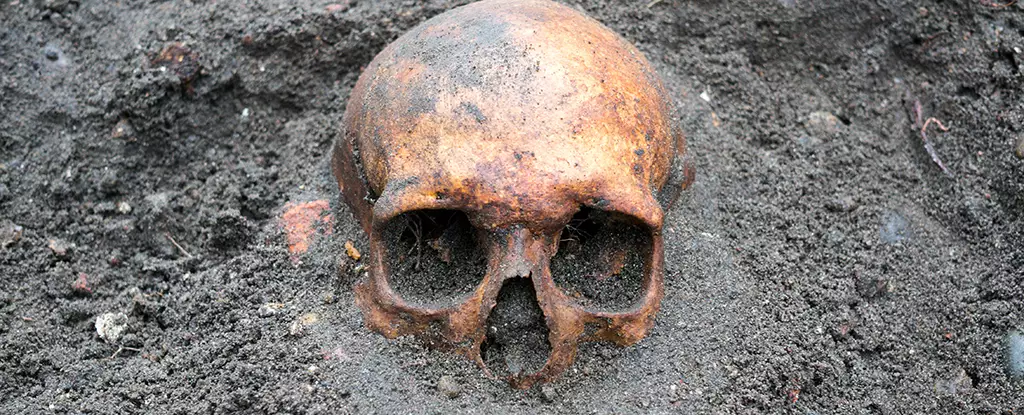The study of ancient gravesites presents a captivating opportunity to delve into the mysteries of our past. Recently, the discovery of Early Neolithic skeletons in a Swedish tomb has left archaeologists puzzled. These remains, found in Tiarp near Falköping, lack one crucial component – their skulls. Uncovered by researchers from the University of Gothenburg in Sweden and Kiel University in Germany, the stone burial chamber, also known as a “dolmen,” has yielded the fragmented remains of at least 12 individuals. However, the absence of skulls raises perplexing questions about their fate. Were they stolen? Consciously removed as part of a ritual? Or were these victims of a series of beheadings? The puzzling enigma that lies within this ancient Swedish tomb may never be fully deciphered.
The skeletal remains discovered in the Early Neolithic period, dating back to around 3500 BCE, offer limited clues and countless speculations. Archaeologist Karl-Göran Sjögren from the University of Gothenburg has described this as an “early grave” and remains astounded by the absence of skulls and larger bones. The absence has left researchers bewildered as to whether this is connected to burial rituals or if there is an entirely different explanation.
While the passage of time has inevitably led to decay in these remains, the preservation of smaller bones and the absence of skulls and other significant bones remains perplexing. This peculiar occurrence is rarely encountered by archaeologists. However, there have been previous reports of missing skulls in even older sites, including one in Slovakia where theories of decapitation, diseases, and death cults were hypothesized.
This particular Swedish tomb in Falköping stands apart from other megalith graves from the Neolithic period, known for containing stone burial chambers with well-preserved bones. Unlike the usual missing smaller bones from feet and hands, the absence of skulls and large bones in this tomb is both intriguing and disturbing.
Situated in an area renowned for its passage graves, this tomb deviates from the norm in both age and distinctive construction features. It predates most other similar tombs by 150 to 200 years, adding to its uniqueness and enigmatic nature. The researchers are currently dedicating themselves to unraveling the secrets hidden within the excavated skeletal parts, which are believed to belong to a community of farmers.
Understanding the familial relationships among the individuals buried here could potentially shed light on why this unconventional burial pattern was followed. By examining mitochondrial DNA and assessing kinship within the grave, researchers hope to gain insight into the events that transpired in this ancient Swedish tomb.
Apart from the human remains, the excavated site has also provided the team with bones from rodents, frogs, pigs, and sheep or goats. However, determining whether all these bones are from the same time period remains uncertain. The abundance of animal remains adds an additional layer of complexity to the puzzle of the missing skulls.
Moreover, the preliminary DNA results indicate that the DNA within the bones is remarkably well-preserved, offering opportunities for further analysis and revelation. By examining genetic markers and comparing them to known populations, researchers may be able to trace the origins of the individuals found in the tomb and potentially shed light on their community and cultural practices.
The missing skulls in the Swedish tomb at Tiarp continue to baffle experts in the field of archaeology. The absence of these crucial body parts elicits theories of theft, ritualistic practices, or even a series of beheadings. However, as of now, no definitive answers have emerged to explain the enigma that surrounds this ancient burial site.
While further research and analysis of the skeletal remains, DNA, and associated artifacts may yield additional insights, the mystery of the missing skulls from these Early Neolithic skeletons may forever remain unresolved. The story of these Swedish tombs serves as a reminder that even in our endeavor to understand the past, there are mysteries that may defy our attempts at explanation.

Leave a Reply